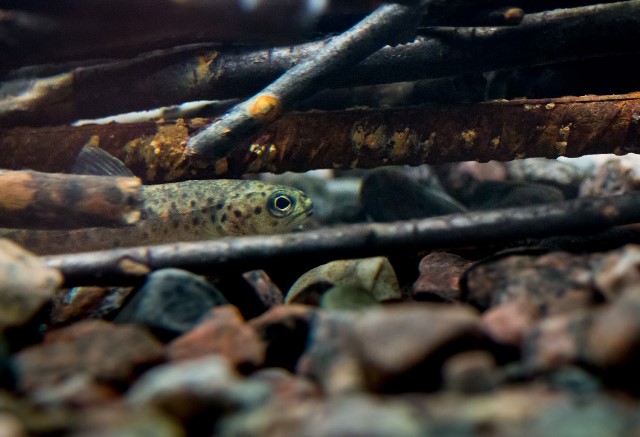Den vetenskapliga artikeln “Effect of fine wood on juvenile brown trout behaviour in experimental stream channels” av Åsa Enefalk och Eva Bergman, publicerades nyligen i tidskriften Ecology of Freshwater Fish. Artikeln presenterar en studie där författarna undersökt unga öringars beteende i strömakvarier med olika mängder fin ved. I artikelns abstract sammanfattar författarna studien:
“In-stream wood can increase shelter availability and prey abundance for stream-living fish such as brown trout, Salmo trutta, but the input of wood to streams has decreased in recent years due to harvesting of riparian vegetation. During the last decades, fine wood (FW) has been increasingly used for biofuel, and the input of FW to streams may therefore decrease. Although effects of in-stream FW have not been studied as extensively as those of large wood (LW), it is probably important as shelter for small-sized trout. In a laboratory stream experiment, we tested the behavioural response of young-of-the-year wild brown trout to three densities of FW, with trout tested alone and in groups of four. Video recordings were used to measure the proportion of time allocated to sheltering, cruising and foraging, as well as the number of aggressive interactions and prey attacks. Cruising activity increased with decreasing FW density and was higher in the four-fish groups than when fish were alone. Foraging decreased and time spent sheltering in FW increased with increasing FW density. Our study shows that juvenile trout activity is higher in higher fish densities and that trout response to FW is related to FW density and differs from the response to LW as reported by others.”
Ladda ner artikeln här. Har du inte tillgång till tidskriftens innehåll men ändå vill läsa artikeln, kontakta någon av författarna.



